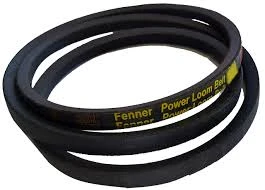- Arabic
- French
- Russian
- Spanish
- Portuguese
- Turkish
- Armenian
- English
- Albanian
- Amharic
- Azerbaijani
- Basque
- Belarusian
- Bengali
- Bosnian
- Bulgarian
- Catalan
- Cebuano
- Corsican
- Croatian
- Czech
- Danish
- Dutch
- Afrikaans
- Esperanto
- Estonian
- Finnish
- Frisian
- Galician
- Georgian
- German
- Greek
- Gujarati
- Haitian Creole
- hausa
- hawaiian
- Hebrew
- Hindi
- Miao
- Hungarian
- Icelandic
- igbo
- Indonesian
- irish
- Italian
- Japanese
- Javanese
- Kannada
- kazakh
- Khmer
- Rwandese
- Korean
- Kurdish
- Kyrgyz
- Lao
- Latin
- Latvian
- Lithuanian
- Luxembourgish
- Macedonian
- Malgashi
- Malay
- Malayalam
- Maltese
- Maori
- Marathi
- Mongolian
- Myanmar
- Nepali
- Norwegian
- Norwegian
- Occitan
- Pashto
- Persian
- Polish
- Punjabi
- Romanian
- Samoan
- Scottish Gaelic
- Serbian
- Sesotho
- Shona
- Sindhi
- Sinhala
- Slovak
- Slovenian
- Somali
- Sundanese
- Swahili
- Swedish
- Tagalog
- Tajik
- Tamil
- Tatar
- Telugu
- Thai
- Turkmen
- Ukrainian
- Urdu
- Uighur
- Uzbek
- Vietnamese
- Welsh
- Bantu
- Yiddish
- Yoruba
- Zulu
Oct . 20, 2024 08:00 Back to list
timing belt design
The Importance of Timing Belt Design in Engine Performance
The timing belt is a crucial component in internal combustion engines, playing a vital role in the synchronization of the engine’s movements. This belt ensures that the crankshaft and camshaft rotate in harmony, allowing the engine's valves to open and close at the correct times during each cylinder's intake and exhaust strokes. A well-designed timing belt significantly enhances engine efficiency, performance, and longevity.
When we delve into timing belt design, several important factors come into play, including material selection, belt geometry, tensioning systems, and maintenance considerations. Each element contributes to the overall functionality and reliability of the engine.
Material Selection
One of the foremost considerations in the design of a timing belt is the selection of appropriate materials. Timing belts are typically made from reinforced rubber compounds, which combine elasticity with robustness. The reinforcement, often made from polyester or similar materials, is crucial for withstanding the high tension levels during operation. The choice of materials directly affects the belt's tensile strength, heat resistance, and overall durability. Advances in materials technology have led to the development of belts that can withstand higher temperatures and more extreme conditions, extending their lifespan and further enhancing engine performance.
Belt Geometry
The geometry of the timing belt is equally important. The belt must be designed to fit specific pulley dimensions and tooth profiles to ensure optimal engagement. A well-matched tooth profile increases the contact surface area, which reduces wear and the likelihood of slippage. Additionally, proper tooth design helps distribute the load evenly across the belt, minimizing the risk of failure. The length and width of the timing belt must also be carefully calculated to fit the engine layout and accommodate any potential thermal expansion without compromising performance.
timing belt design

Tensioning Systems
Another critical aspect of timing belt design is the tensioning system. A timing belt must be kept at the correct tension to function effectively. Too much tension can lead to premature wear, while insufficient tension may cause slippage, resulting in misalignment of the camshaft and crankshaft. Various tensioning mechanisms, such as hydraulic, spring-loaded, or manual tensioners, can be utilized to maintain optimal belt tension throughout the belt's service life. The design of these systems must consider engine vibration, temperature fluctuations, and the overall movement of the engine components to ensure they remain effective over time.
Maintenance and Replacement
Maintaining the timing belt is essential to prevent catastrophic engine failures. Most manufacturers recommend replacing the timing belt at regular intervals, often between 60,000 to 100,000 miles, depending on the vehicle. This proactive approach minimizes the risk of belt failure, which can cause severe damage to engine components. The design of the timing belt system can also facilitate easier inspections and replacements, allowing mechanics and vehicle owners to monitor the belt's condition effectively.
Conclusion
In summary, the design of timing belts is a complex interplay of material science, mechanical engineering, and practical maintenance. A well-designed timing belt not only enhances the engine's performance but also contributes to its longevity and reliability. As automotive technology continues to evolve, innovations in timing belt design will play a crucial role in meeting the demands of modern engines and ensuring optimal performance for years to come.
-
Korean Auto Parts Timing Belt 24312-37500 For Hyundai/Kia
NewsMar.07,2025
-
7PK2300 90916-T2024 RIBBED BELT POLY V BELT PK BELT
NewsMar.07,2025
-
Chinese Auto Belt Factory 310-2M-22 For BMW/Mercedes-Benz
NewsMar.07,2025
-
Chinese Auto Belt Factory 310-2M-22 For BMW/Mercedes-Benz
NewsMar.07,2025
-
90916-02660 PK Belt 6PK1680 For Toyota
NewsMar.07,2025
-
drive belt serpentine belt
NewsMar.07,2025

